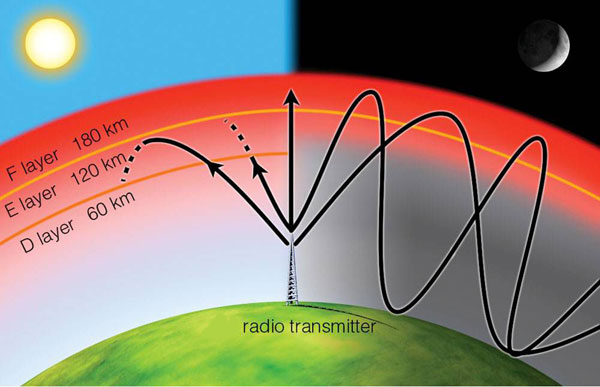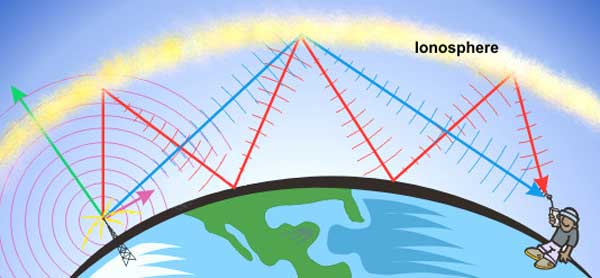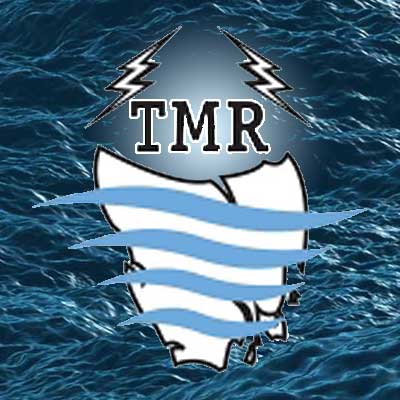
HF
Communication over greater distances.
The High Frequency (HF) band of radio waves includes the range from 3 to 30 MHz inclusive. HF is a major part of the shortwave band of frequencies which are used for long distance communication, including intercontinental distances. The band is used by international shortwave broadcasting stations, aviation communication, government time stations, weather stations, amateur radio and citizens band services, among other uses.
How it works

HF radio waves bounce off the ionosphere and can be received over the horizon. These waves can travel huge distances and higher frequencies generally have greater ranges. TMR has even picked up transmissions from the US Coast Guard base in Kodiak Alaska.
Different frequencies reflect from different ionospheric layers whose density and height varies between day and night. At night reception tends to be better, but this is affected by meteorological conditions which makes HF reception extremely difficult to predict. Vessels on long voyages in the South Pacific or in New Zealand can communicate with us.
Which Band to Use
Try to use the lowest HF band that will give clear communications. If unsuccessful try the next higher band. A general guide of distances and appropriate bands is shown below, but remember that HF is affected by atmospheric conditions and the guidelines below are not absolute.
| Approximate DistanceDayNight | |||
| Less than 300km | 3 - 4 MHz | 2 - 4 MHz | |
| Between 300km & 750km | 5 - 6 MHz | 3 - 7 MHz | |
| Between 750km & 1,500km | 5 - 9 MHz | 6 - 10 MHz | |
| Between 1,500km & 2,500km | 8 - 12 MHz | 7 - 11 MHz | |
| Between 2,500km & 5,000km | 10 - 18 MHz | 8 - 15 MHz |
Note that Tas Maritime Radio operates only the bands shown below.
Frequencies
Tas Maritime Radio operates HF in the 4, 6 and 8 mHz frequency ranges. The table below lists the distress safety and calling frequencies and working frequencies for these bands.
| Band | Distress/calling frequency † | Working frequency | |
|---|---|---|---|
| 4 MHz | 4125 kHz | 4146 kHz | |
| 6 MHz | 6215 kHz | 6227 kHz | |
| 8 MHz | 8291 kHz | 8294 kHz |
† do not use these frequencies for conversations and always return to them when not using your radio.
Skeds on HF
TMR conducts skeds on the working frequencies listed in the table above. A pre-announcement is broadcast on the calling channels and vessels are asked to select a working frequency to listen to the sked.
